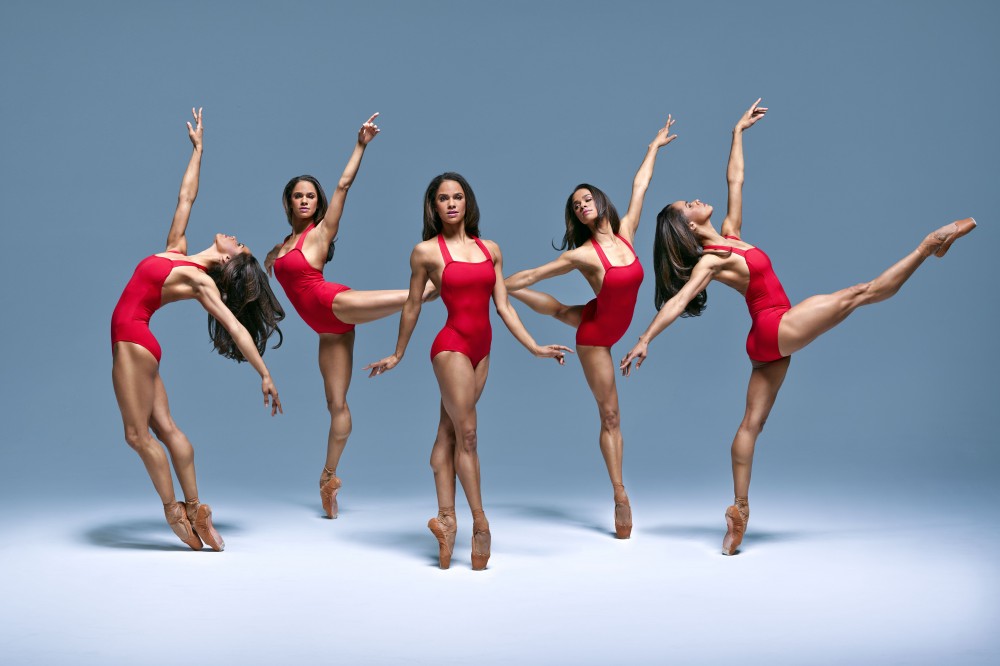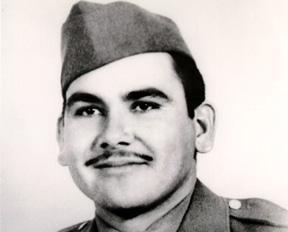In 2007, Misty Danielle Copeland became the first African-American ballerina to be a principal dancer with the American Ballet Theater (ABT) in twenty years. Since then, Misty Copeland has become a recognized icon for breaking down barriers in the art of dance. All her determination and resilience was built on the work of her mentor, Raven Wilkinson. Wilkinson was an African-American ballerina performing in the early days of the Civil Rights Movement. “She’s been through so much more than I could ever imagine, in the 1950s and experiencing racism in that time. It just felt like, ‘I can do this,'” Copeland expressed.1 Misty Copeland knew racism was not going to stop her from chasing her dreams.
As a young child, Misty Copeland expressed herself in the form of dance and instantly fell in love with the art. With her family’s hardship, dance was her escape and all her worries went away. Some of these worries included a lack of finances, a lack of comfortable living conditions, and a mother constantly changing boyfriends.2 Dance offered Copeland a way to relax and forget about all her problems. A prodigy by the age of thirteen, she surpassed the other dancers even with the many years they had ahead of her.
Once her training became more intense, Copeland began competing and receiving scholarships. At age fifteen, she was accepted with a full scholarship to the San Francisco Ballet’s Intensive Summer Program. In 2000, Copeland was also named the ABT’s Coca-Cola Scholar. After the program, the ABT invited Copeland to be part of their own studio company. She was the only African-American woman out of eighty dancers, an impressive feat since she was often challenged by her race and physique.3 “I had been told to pancake my skin a lighter color to fit in with the rest of the company,” she wrote.4 Nonetheless, she rose up with her extraordinary skill, and the lack of racial diversity came to the forefront, beginning to make waves in the ballet world.

Stephanie Webre challenged the status quo by casting two African Americans to play the leading roles in Swan Lake: Brooklyn Mack and Misty Copeland. Copeland and Mack were exquisite for their dancing. However, their performance was also admired for Webre’s ethnic inclusiveness, because dancers of color rarely get the chance for leading roles. According to Karen Sparks: “Many companies and schools endorse retrograde aesthetic values that place dancers of color at a disadvantage in the realms of hiring, castings, and promotions.”5 This discouraged African-American dancers from continuing on and studying ballet. For these reasons, there have been insufficient breaks for dancers of color.
After two decades, Misty Copeland became the first African-American soloist dancer to perform for ABT. Her story quickly made her a role model. “It made me feel really empowered not to let the negativity of racism even to this day affect me and my career. I can be strong and persevere and allow my talent to shine beyond the color of my skin,” she wrote.6 Misty Copeland became an advocate for “diversifying the field of ballet and creating access for dancers of varying racial and economic backgrounds.”5
Since receiving a leading role, Copeland has served on the advisory committee for the ABT’s Project Plié, which is a program “to increase racial and ethnic representation in ballet that offers guidance to dance instructors in diverse communities around the United States.”8 Project Plié’s objective is to discover the next “Misty Copeland” and invest in his or her training. The program is made up of a combination of corporations within the dance community to provide scholarships and many opportunities for dancers of color. Project Plié offers internships to encourage many dancers of various backgrounds to pursue their dreams of becoming professional ballerinas. In order to obtain a scholarship or internship, the student must attend many auditions and attract the attention of the advisory committee. Once selected, Project Plié interns are eligible to receive a scholarship to live during their time in New York City. The scholarship consists of roundtrip transportation, a metro card, and housing assistance. This organization could not be what it is today without Misty Copeland’s determination. She continues to advocate for dancers of color and dancers of unprivileged backgrounds to pursue their dreams of becoming a dancer. Today, several ballet companies have made progress in changing racial inequality in ballet. Just within the last decade, many companies have recruited dancers and have begun to change the complexion on the stage. Misty Danielle Copeland is breaking the racial barriers and paving the way for future ballerinas.9

- Encyclopedia Britannica, December 2014, s.v. “Misty Copeland,” by Naomi Blumberg. ↵
- Misty Copeland, Life in Motion: An Unlikely Ballerina (New York: Aladdin, 2014), 20. ↵
- Encyclopedia Britannica, December 2014, s.v. “Misty Copeland,” by Naomi Blumberg. ↵
- Misty Copeland, Life in Motion: An Unlikely Ballerina (New York: Aladdin 2014), 20. ↵
- Encyclopedia Britannica, June 2015, s.v. “Addressing Racial Diversity in Ballet,” by Karen Sparks. ↵
- Misty Copeland, Life in Motion: An Unlikely Ballerina (New York: Aladdin 2014), 127. ↵
- Encyclopedia Britannica, June 2015, s.v. “Addressing Racial Diversity in Ballet,” by Karen Sparks. ↵
- Encyclopedia Britannica, June 2015, s.v. “Addressing Racial Diversity in Ballet,” by Karen Sparks. ↵
- Rhonesha Byng, “Misty Copeland Inspires Project Plie, A Diversity Initiative Launched By ABT To Fine More Black Ballerinas,” Huffpost, September 2013, https://www.huffingtonpost.com/2013/09/19/misty-copeland-project-plie-_n_3950827.html. ↵



60 comments
Caroline Bush
Great article! I really enjoyed reading about Misty Copeland journey to success and how the author described it. Its really inspiring to read about how Copeland’s managed to rise to be one of the best ballerinas. she is also really inspiring because she did not let the company’s thoughts on the color of her skin stop her from achieving her dreams. Overall I really enjoyed this article and found the amount of details in this article great. I also really enjoyed the pictures used in the article and thought they pulled the story together very well.
Regina De La Parra
Great article! I was a ballerina all of my life up until my sophomore year in high school and I believe that Misty is a great inspiration and role model. The author was able to show that with the choice of words and the great use of imaginary. I think that she deserves a lot of recognition because of her work and dedication. Great job Alexandra!
Miranda Alamilla
Having been in ballet when I was younger, I kept up with the ballet world for quite a while. So obviously, I have at least a slight knowledge of who Misty Copeland is. however, it was very cool to read that at age fifteen, Copeland was accepted with a full scholarship to the San Francisco Ballet’s Intensive Summer Program. It’s very uplifting to read that she didn’t let the color of her skin hold her back!
Andrew Dominguez
This was a very interesting article, and I’ve never knew of Misty before this article. What i like is there are scholarships which allow all racial backgrounds to have the opportunity to perform ballet. This is especially important since it no longer matters the color of your skin, from one achieving their dream. What i thought was rude is the people would tell her to make herself lighter in color,but now she changed how ballet is viewed.
Maria Esquivel
I really enjoyed reading your article! It’s always great to read about the talented, Misty Copeland. Misty broke down many barriers in ballet, and continues to break them. She is a true inspiration because she did not let the color of her skin determine how successful she would be. Rather, she always gave it her all regardless of her skin tone. She is an incredible role model, and it was a pleasure reading your article on Misty and her success. Great Job!
Iris Henderson
A great use of imagery by the author of this article. The introduction paragraph was also captivating and well-done. It was a bit shocking to learn that some dance companies requested that Misty “pancake” her makeup, as to lighten her skin tone to fit in. Fortunately, Misty didn’t allow these experiences of racism to deter her from her future success. Copeland is definitely a role model to young women of color, sharing a message of perservearance.
Rafael Lopez-Rodriguez
Loved the article!! I is amazing how a person can easily express themselves through this beautiful art of ballet. How she rose to become one of the best dancers knowing where she is coming from is definitely a very inspirational story and one to look up to. I enjoy reading stories that talk about breaking barriers because it shows that one can achieve their goals despite where they come from.
Hanadi Sonouper
This was a very well written and concise article on Misty Copeland, it is always a pleasure to read about her success and life history. It is always interesting to read about her own ability to break down boarders in the world of sports, especially ballet. Because ballet for hundreds of years has been know as a sport for a certain type of body, skin color, and image, but once Misty Copeland engaged in this artistic sport, she was destined to change world views. She has paved the way for many girls and boys to follow their own passions, and see ballet as one of the toughest sports out there, she has the credibility and drive to prove everyone wrong and be successful.
Amanda
I love this article! I like that you talked about her mentor and described some of her challenges. I liked that you talked about the challenges that she faced but put a greater emphasis on how she is helping future generations.
Andie
Great job! I absolutely loved it. You were so authentic and showed true dedication and passion for the sport with your excellent word choice. You presented the audience with a clear picture of Misty Copeland.